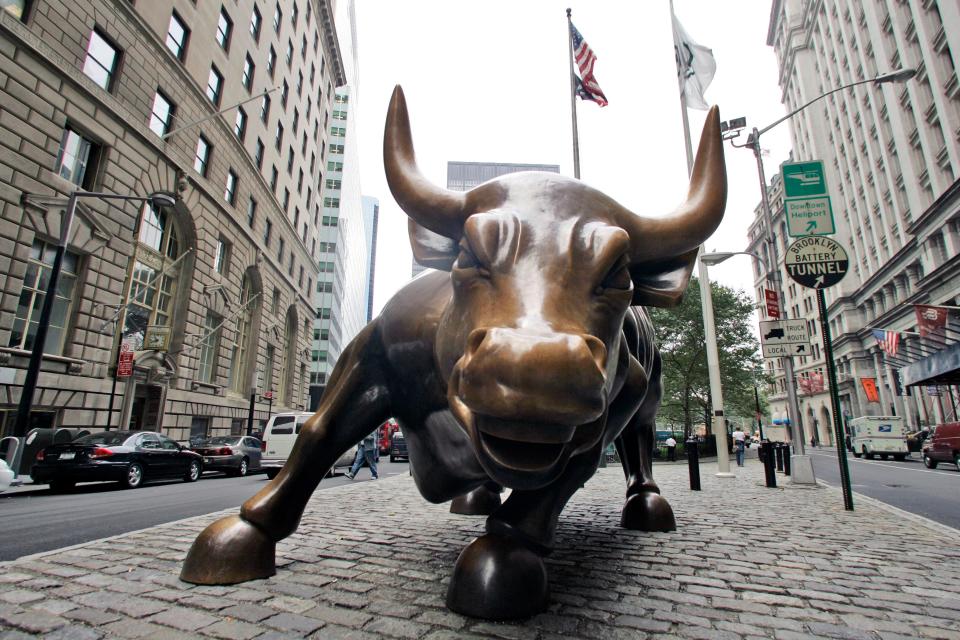
[ad_1]
Americans have been in a grumpy mood of late. Pessimism stood at “overwhelmingly high” levels, Gallup reported in mid-October, echoing similar grim readings from the University of Michigan and other pollsters.
But perceptions aren’t entirely matching reality, at least when it comes to financial, economic and money issues. With one month left, 2023 is shaping up as a solid year, with a personality more akin to Santa Claus than Scrooge.
As 2022 ended, interest rates were rising, inflation was running at a 6.5% annualized pace and the stock market had just suffered a 19% drubbing. Since then, interest rates have largely stabilized, inflation has dropped noticeably and stocks are rallying again.
An improving economic backdrop
The big economic question at the end of last year centered around when in 2023 a recession would start. That talk has died down following three quarters of Gross Domestic Product increases, including a preliminary jump of 4.9% for the period from July through September.
The earlier pessimism was sparked by an aggressive series of interest-rate hikes. While borrowers have been squeezed, the Federal Reserve’s policy has helped to tamp down inflation, with the rate dropping in half this year, to 3.2% as of October. Inflation now is much closer to the Fed’s 2% target than it was in June 2022, when the rate peaked at 9.1%.
That suggests the next trend likely will be toward lower interest rates, though in a gradual fashion.
“It’s too early to declare victory,” cautioned Mary Daly, president and CEO of the Federal Reserve Bank of San Francisco, during a talk in Phoenix. “Now that we’ve set our 2% (inflation) goal, we’re committed to meeting it; it’s not credible to move the goal posts midstream.” But the goal posts are getting closer, with inflation down another half-point since she spoke in late September.
New trend of profit growth could buoy stocks
The stock market has strengthened in recent weeks and, barring a late collapse, will post a solid gain for the year — in contrast to the 19% drop in 2022 for the Standard & Poor’s 500, the third worst slump in four decades. The advance so far this year through Nov. 21 was nearly 17%, excluding dividends.
Several factors explain this rebound, and a big one is a pending improvement in corporate earnings. Stock prices rise when companies make more money, and that could be the case soon, after three straight quarters of profit declines.
Third-quarter earnings “continue to be better than expected” and are on track to increase for the period, wrote Sheraz Mian, research director at Zacks Investment Research, in a recent report.
For the 468 companies of the 500 in the S&P 500 index that had reported results as of Nov. 20, aggregate earnings were up 1.5% compared with the third quarter of 2022. That doesn’t sound like much, but it could mark the resumption of another lengthy upward trend.
Stocks and your 401(k) may surge now that Fed rate hikes seem to be over, history shows
Federal debt outlook shows some promise
Even the federal debt picture, of all things, could provide cause for modest optimism.
Granted, Congress has been considering another year-end tax package that would add to the debt by, for example, expanding the Child Tax Credit and restoring or extending several business tax breaks. That package could add another $800 billion in debt through 2033, estimates the Committee for a Responsible Federal Budget.
“With interest costs surging and debt approaching record levels, is Congress really discussing more tax cuts?” asked Maya MacGuineas, the group’s president, in a recent statement. “Can politicians really just not help themselves?”
Nevertheless, Congress has made progress in enacting legislation to rein in the federal debt.
The red-ink totals continue to rise, but “legislative and executive actions put in place this year so far have reduced the projected debt by $1.3 trillion over the coming decade, compared to what otherwise would have been,” reported the Committee for a Responsible Federal Budget. The group attributes the improvement mainly to passage of the bipartisan Fiscal Responsibility Act.
With the debt now standing at about $33 trillion, plus or minus a few hundred billion, there’s still a long way to go. And with politicians entering an election year when many will promise the moon, the fiscal backdrop could get worse before it gets better. But as things stand now, it’s a start.
Clearly, the financial and economic climate isn’t entirely comforting. Personal debt levels remain high, a lot of Americans are living paycheck to paycheck, small businesses are feeling the pinch more than big corporations and Social Security’s finances are still pointing in the wrong direction — to name just a few worries.
But if the economy continues to avoid a recession and if interest rates start dropping while inflation remains under control, then Americans will have reason to be a bit more optimistic in 2024.
Reach the writer at russ.wiles@arizonarepublic.com.

This article originally appeared on Arizona Republic: US economy and stock market show signs of life at year-end
Source link




